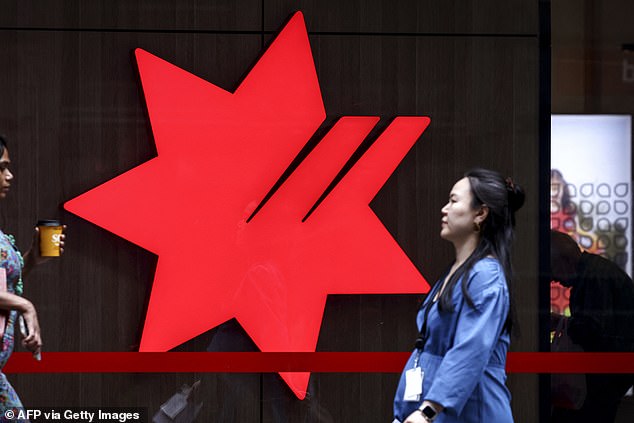Bad news for borrowers as major NAB makes a big call
- NAB now predicts a rate cut in May
Australian home borrowers could wait until May next year for a rate cut, a major bank says.
NAB has revised its forecasts for the Reserve Bank to cut interest rates after Easter instead of in February.
Chief economist Alan Oster said a May rate cut was now more likely because the Reserve Bank was concerned about labor costs keeping inflation high.
“The labor market is stronger than expected and the RBA remains concerned about the upside risks to inflation if the labor market cooldown comes to a halt and capacity growth remains sluggish,” he said.
The 30-day interbank futures market now expects just one cut in the RBA rate in 2025, from the existing level of 4.35 percent.
But NAB is certainly more optimistic, predicting three rate cuts next year, which would see Reserve Bank rates fall to 3.6 percent for the first time since May 2023.
National Australia Bank updated its forecasts on Thursday, just six weeks after revising its forecasts to cut rates in February instead of May.
Australia’s other Big Four banks – Commonwealth, Westpac and ANZ – still expect a rate cut in February.
Australian home borrowers could wait until May next year for a rate cut, a major bank says. The photo shows shoppers at Pitt Street Mall in Sydney
This would mark the first monetary policy easing since November 2020, and see the RBA reverse its thirteen increases in 2022 and 2023.
Overall inflation in the year to September fell to a three-year low of 2.8 per cent, but this was based on one-off factors such as $300 electricity rebates from the federal government and cheaper petrol prices.
Underlying inflation, which strips out volatile price components, was higher at 3.5 percent and above the Reserve Bank’s target of 2 to 3 percent.
Services inflation was even higher at 4.6 percent, meaning domestic factors such as weak productivity and insufficient labor are now the main driver of higher prices rather than global supply constraints.
Although wage growth has slowed to 3.5 percent, unemployment remains low at 4.1 percent, with a further 36,800 jobs created in October.
NAB predicted that inflation pressures would only ease if unemployment rose to 4.5 percent.
“Inflation data shows continued pressure in components sensitive to domestic demand and labor costs,” Oster said.
“A further cooling in the labor market and evidence of further progress in realized inflation rates in coming quarters will allay concerns that the labor market is a source of inflation risk and provide scope for policy easing to maintain full employment.”

NAB has revised its forecasts for the Reserve Bank to cut interest rates after Easter instead of in February. Pictured is a branch in Sydney
Australian borrowers are missing out on relief, even though rates have already been cut this year in the US, UK, Canada, European Union and New Zealand.
Canada has cut rates four times this year and the policy rate of 3.75 percent is 60 basis points lower than the equivalent level in Australia of 4.35 percent.
But RBA Governor Michele Bullock has ruled out any relief by Christmas, with NAB arguing its board was in no rush to cut rates.
“While we expect interest rates to decline over time, as the RBA’s policy stance is only modestly restrictive, there is little urgency to adjust policy settings as both inflation and unemployment evolve gradually,” he said. Oster.
As recently as October, the futures market predicted four interest rate cuts in 2025.
But the country now expects just one cut in July next year, followed by another in April 2026.
The Reserve Bank’s next announcement is on December 10.
NAB changed its forecasts on the same day it cut the variable mortgage rate by 40 basis points to 6.44 percent. This is a clear sign that competition between the big banks is still fierce, even if there is no relief from the RBA for a while.
